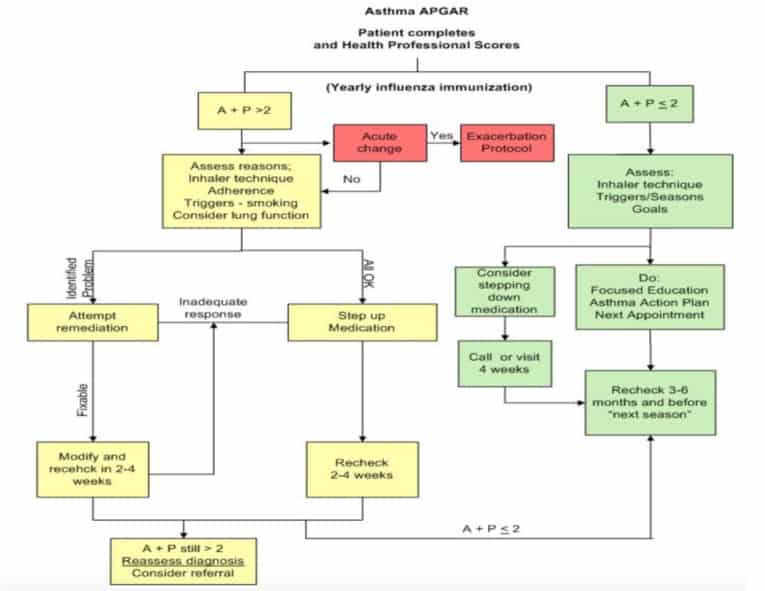Inside Angle
From 3M Health Information Systems
Barriers to data capture frustrate clinicians…and patients
People with asthma have many fewer emergency room, urgent care and doctor office visits when their primary care practices link symptom survey results to care guidelines according to a recent study.
These University of Minnesota researchers worked with 18 family medicine and pediatric practices from across the U.S. that figured out how to systematically survey the people with asthma – e.g. the number of times in the past two weeks that breathing problems interfered with activities. Survey results guided the PCPs to the following care algorithm:
Previous studies tell us that PCPs find current technology inadequate to the work required to follow processes like this for the multiple conditions and guidelines needed in their daily work.
This is where technology might better enable the work. People with asthma could theoretically be surveyed on their mobile devices. This information might be scored automatically and fed into the workflow of the primary care practice, thus eliminating a number of steps and administrative work.
The asthma study found that integration of this workflow into current electronic medical records challenging:
“Unfortunately, our practices reported that embedding the tools was often expensive and slow, especially if the practice or health system used one of the larger, more established systems with long wait times and high prices charged for these changes.”
These technologic hurdles are surmountable. We should not frustrate care delivery with barriers to data capture and transfer between electronic systems and we can do a better job of fitting the technology into the natural workflow of very busy clinicians.
L. Gordon Moore, MD, is Senior Medical Director, Clinical Strategy and Value-based Care for 3M Health Information Systems.



